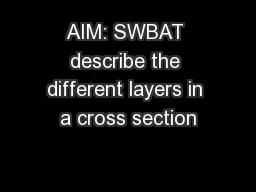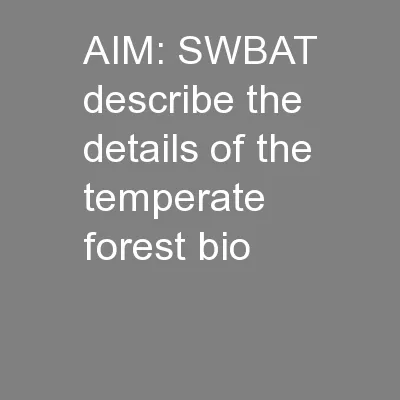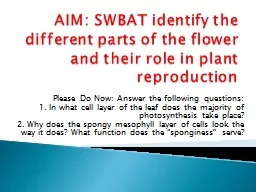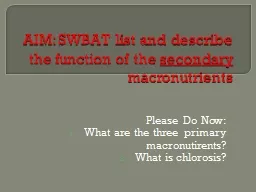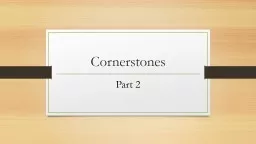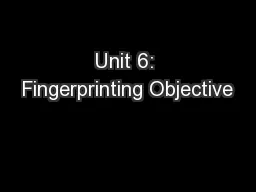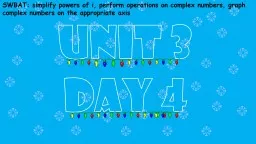PPT-AIM: SWBAT describe the different layers in a cross section
Author : calandra-battersby | Published Date : 2016-10-30
Please Do Now What molecule does woody plant tissue have that green plant tissue like leaves does not Agenda Do Now Tree Notes Tree ring activity Spongy Mesophyll
Presentation Embed Code
Download Presentation
Download Presentation The PPT/PDF document "AIM: SWBAT describe the different layers..." is the property of its rightful owner. Permission is granted to download and print the materials on this website for personal, non-commercial use only, and to display it on your personal computer provided you do not modify the materials and that you retain all copyright notices contained in the materials. By downloading content from our website, you accept the terms of this agreement.
AIM: SWBAT describe the different layers in a cross section: Transcript
Download Rules Of Document
"AIM: SWBAT describe the different layers in a cross section"The content belongs to its owner. You may download and print it for personal use, without modification, and keep all copyright notices. By downloading, you agree to these terms.
Related Documents

